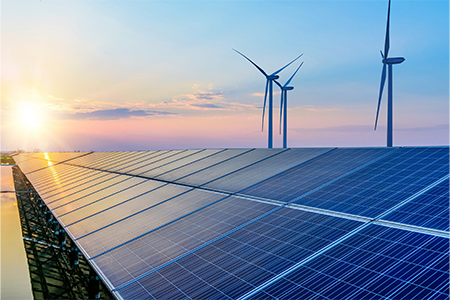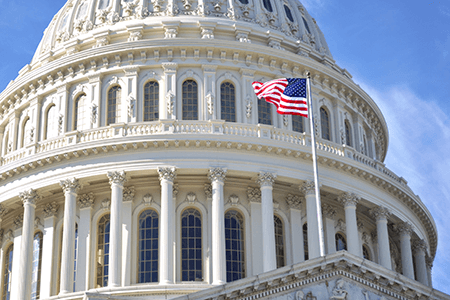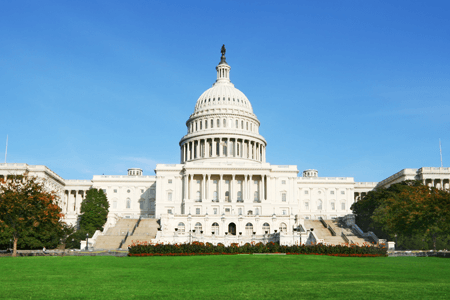The Biden administration continues its dialogue with American chemistry and other stakeholders around strategies to advance national climate and economic development goals. As federal agencies issue a series of Requests for Information (RFIs) regarding a variety of lower-emissions technologies, ACC is highlighting chemical industry activities and offering recommendations on how to optimize these programs.
Clean Hydrogen
On December 1, ACC filed comments on the U.S. Department of Energy’s (DOE) Draft National Clean Hydrogen Strategy and Roadmap. Chemical makers are exploring the use of hydrogen to help reduce emissions and create jobs. We have a history of leadership in hydrogen production and use, accounting for roughly one-third of the 10 million-ton U.S. hydrogen market in 2020 – one of the largest markets globally.
Hydrogen is a valuable resource in current chemical manufacturing processes, and it offers exciting potential to help create a more competitive, lower-emissions chemical sector in the future.
In a 21st century clean hydrogen economy, chemical manufacturers are hydrogen producers and suppliers, technology enablers, users, and market creators.
The innovation, infrastructure, and production incentives authorized under the Infrastructure Investment and Jobs Act (IIJA) and the Inflation Reduction Act (IRA) can help accelerate clean hydrogen deployment across the economy. To maximize their impact, agencies should implement programs in a way that maintains current U.S. hydrogen production capacity and competitive position while promoting a smooth transition to cleaner hydrogen sourcing, production, and use.
Current hydrogen production, technologies, and markets are fundamental to the clean hydrogen transition. ACC is urging agencies to develop definitions, metrics, and guidance that incentivize early adoption of existing technologies while investing in emerging solutions. Policymakers need to consider technology readiness and the level of infrastructure necessary for national, commercial-scale deployment. Accelerated infrastructure siting, permitting, and funding will be key. Program implementation should maximize access to funding while minimizing cost, burden, and uncertainty.
Our comments go on to discuss opportunities for expanded hydrogen use, potential barriers to broad clean hydrogen deployment, feedback on DOE’s strategic priorities, guiding principles for implementation, and input on DOE actions supporting its National Clean Hydrogen Strategy. ACC is also supporting the Hydrogen for Industry Act, bipartisan legislation that would amend the Energy Policy Act of 2005 to establish a Hydrogen Technologies for Heavy Industry Grant Program.
Treasury Department/IRS Credits

On December 2, ACC responded to U.S. Department of the Treasury/Internal Revenue Service (IRS) Requests for Comment on Credits for Clean Hydrogen and Clean Fuel Production (Notice 2022-58), Carbon Oxide Sequestration (Notice 2022-57), and Section 45W Credit for Qualified Commercial Clean Vehicles and Section 30C Alternative Fuel Vehicle Refueling Property Credit (Notice 2022-56).
The IRA and IIJA contain historic energy and manufacturing innovation incentives and infrastructure investments that could reshape the U.S. economy and help move the nation toward a lower emissions future. To unlock this potential, policymakers, businesses and other stakeholders, and citizens will need to work together in support of timely and constructive implementation of these laws.
The Treasury Department and the IRS have wisely focused on the guiding principles of “robust public engagement,” “clarity and certainty,” and “sound stewardship” throughout the implementation process. Additional principles should include:
- Supply chain perspective: Federal agencies should support innovation that will improve the efficacy, efficiency, reliability, and cost-effectiveness of the lower-emissions technology supply chain. A broad range of facilities, technologies, components, and materials will need to be able to qualify for federal incentives. A narrow interpretation of eligibility could result in bottlenecks among the producers of renewable energy products and/or technologies and their suppliers.
- Policy Alignment: IRA tax credits and funding provide powerful incentives for innovation and technology deployment, but regulatory policy needs to support these efforts. Treasury and IRS should work with DOE, EPA, and other agencies to ensure that regulatory approaches support innovation and deployment of lower-emissions technologies, products, and projects. Our comments provide details.
- Capacity Building: To achieve the economic and climate transformation sought through the IRA, our nation will need to swiftly expand and modernize energy, manufacturing, and transportation infrastructure linking suppliers, manufacturers, and users of lower-emissions technologies. Guidance from federal agencies should account for the time and adjustment necessary for robust infrastructure build-out, and a diverse range of projects should qualify for incentives to help ensure early and adequate investment.
ACC also addressed several specific questions posed by Treasury/IRS. Details are in the full text of our comments.



